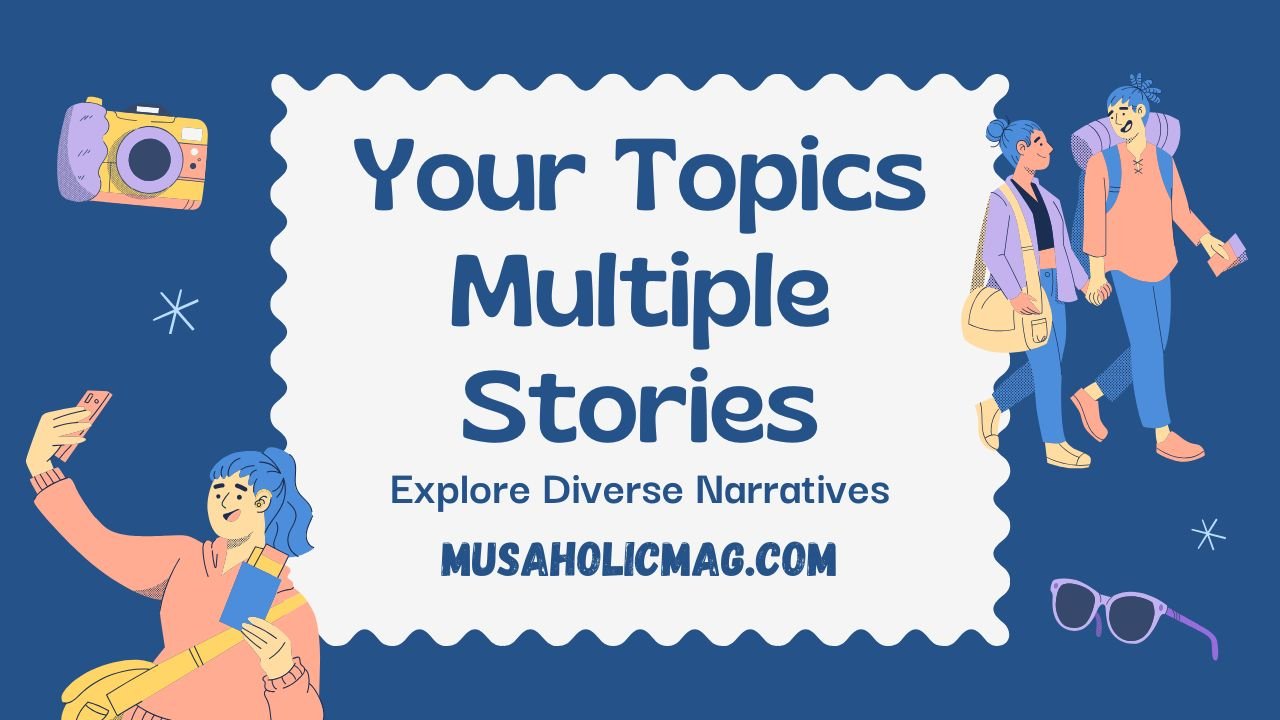Storytelling is a powerful tool that transcends boundaries, cultures, and generations. It can connect us with our deepest emotions and shared experiences. Yet, the richness of Your Topics Multiple Stories often lies in its diversity—different perspectives bring unique flavors to narratives. This exploration into varied voices enriches literature and media, making them more vibrant and relatable.
As we delve deeper into this topic, it’s essential to recognize how diverse narratives shape not only our understanding of different communities but also foster empathy and connection among us all. By embracing stories from a multitude of backgrounds, we open doors to conversations that matter. Let’s embark on this journey together as we uncover the beauty found within Your Topics Multiple Stories!
The Importance of Diverse Narratives in Literature and Media
Diverse narratives in literature and media serve as windows into varied human experiences. They allow us to step outside our comfort zones and explore the lives of others, fostering empathy and understanding.
When stories originate from different backgrounds, they challenge stereotypes. They break down barriers that often separate communities. This kind of representation is vital for readers who rarely see themselves reflected in mainstream narratives.
Moreover, diverse storytelling enriches the creative landscape. Unique perspectives lead to innovative plots and characters that resonate with wider audiences.
As society continually evolves, so should our stories. Embracing multiple viewpoints not only enhances artistic expression but also mirrors the complexity of real life. These narratives are essential for a holistic understanding of humanity’s rich tapestry.
Examples of Diverse Narratives in Popular Stories
Diverse narratives can be found in many popular stories that resonate with audiences worldwide. Take “Black Panther,” for instance. This Marvel film not only showcases African culture but also highlights the complexities of identity and heritage.
In literature, “The Hate U Give” by Angie Thomas presents a poignant view of race and social injustice through the eyes of a young Black girl navigating two worlds.
Another notable example is “Crazy Rich Asians,” which gives readers a glimpse into the lives of wealthy Asian families while addressing issues related to class and cultural expectations.
Television series like “Master of None” break ground by exploring multicultural experiences and relationships, reflecting real-life dynamics within diverse communities. These stories enrich our understanding and foster empathy across different backgrounds.
How Diverse Narratives Can Impact Society and Culture
Diverse narratives hold immense power in shaping society and culture. They offer windows into experiences different from our own, fostering empathy and understanding. When stories reflect a variety of voices, they challenge stereotypes and break down barriers.
These narratives encourage conversations about identity, race, gender, and more. By illuminating the struggles faced by marginalized communities, they inspire action toward social change. Readers are prompted to consider perspectives they may have never encountered otherwise.
Moreover, diverse storytelling enriches cultural landscapes. It introduces new ideas and values that can reshape societal norms. As these stories gain visibility in literature and media, they help validate individual identities within larger contexts.
Embracing diverse narratives cultivates an inclusive environment where everyone feels seen and heard. This shift not only influences personal perceptions but also drives collective growth as we navigate our shared humanity together.
Tips for Incorporating Your Topics Multiple Stories!
Start by immersing yourself in stories from various cultures. Read widely and listen actively to experiences outside your own.
Engage with communities directly. Attend events, workshops, or discussions that focus on diverse perspectives. This helps build genuine connections.
Consider character development carefully. Create multi-dimensional characters who reflect real-life complexities rather than stereotypes.
Use sensitivity readers when crafting narratives about underrepresented groups. Their insights can be invaluable for authenticity and respectfulness.
Experiment with different storytelling forms—poetry, prose, or even graphic novels—to convey diverse voices uniquely.
Keep an open mind as you write. Allow room for growth and change in your characters’ journeys while remaining true to their backgrounds.
Real-Life Stories of Individuals from Marginalized Communities
Real-life stories reveal the strength and resilience of individuals from marginalized communities. Each narrative offers a glimpse into unique experiences, struggles, and triumphs.
Take the story of a young immigrant who arrived with dreams but faced numerous barriers. Their journey illustrates adaptability and courage in navigating a new environment while preserving their cultural identity.
Another powerful example is that of an LGBTQ+ activist who overcame societal rejection. Their advocacy work not only seeks justice for themselves but also uplifts others facing similar challenges.
A single mother from a low-income background can inspire hope through her determination to provide for her children against all odds. Her relentless pursuit of education serves as motivation for those around her.
These narratives allow us to connect on deeper levels, fostering empathy and understanding across diverse backgrounds. They highlight the importance of representation in storytelling, ensuring every voice is heard and valued.
Conclusion
Diverse narratives hold immense power. They shape our understanding of the world and foster empathy among individuals from different backgrounds. By exploring stories that reflect a variety of experiences, we not only enrich our own perspectives but also give voice to those who often go unheard.
Sharing these narratives encourages inclusivity in literature and media. It challenges stereotypes and breaks down barriers, allowing for a more nuanced view of humanity. When we embrace diverse voices, we create space for dialogue and promote social change.
The urgency to continue this exploration is clear. Our society thrives on diversity; it’s what makes us unique. Every story shared adds depth to the collective narrative of humanity. So let’s commit ourselves to seeking out these varied viewpoints, amplifying marginalized voices, and inspiring others through storytelling.
Your topics multiple stories can transform lives—for both the storyteller and their audience alike. Engaging with diverse narratives isn’t just beneficial; it’s essential for fostering understanding in an increasingly interconnected world.

